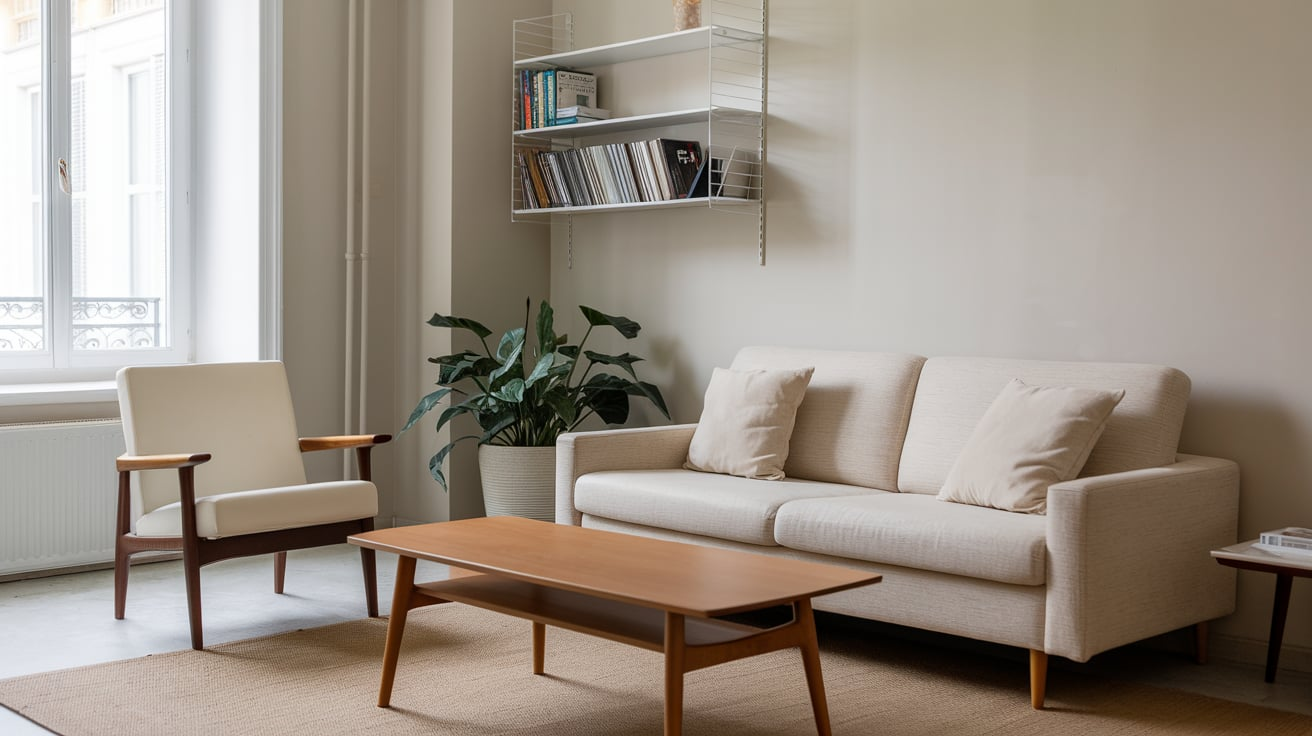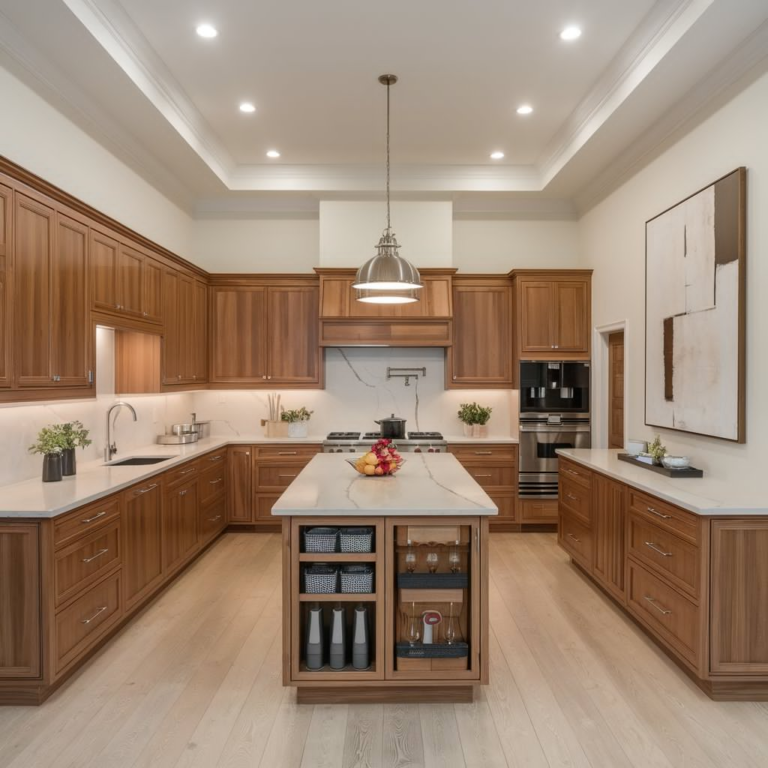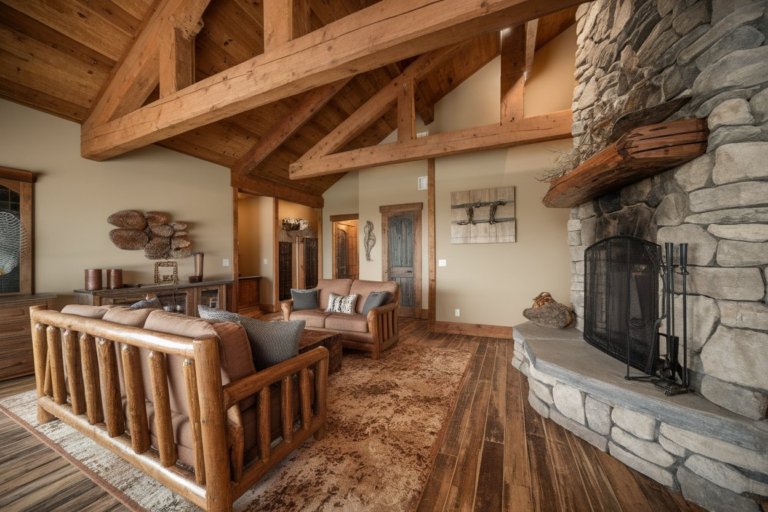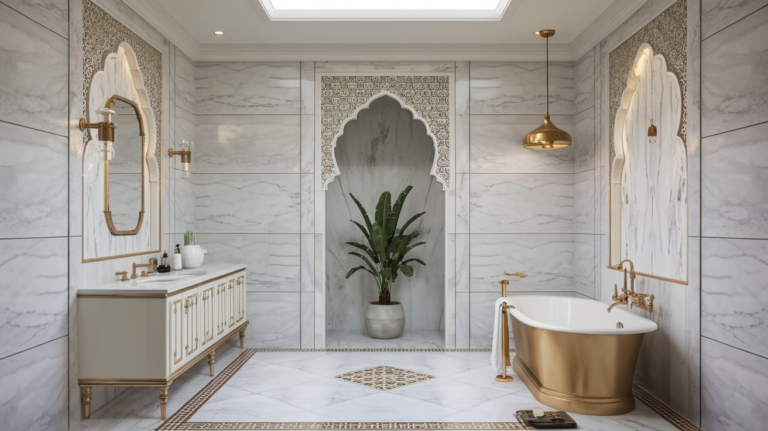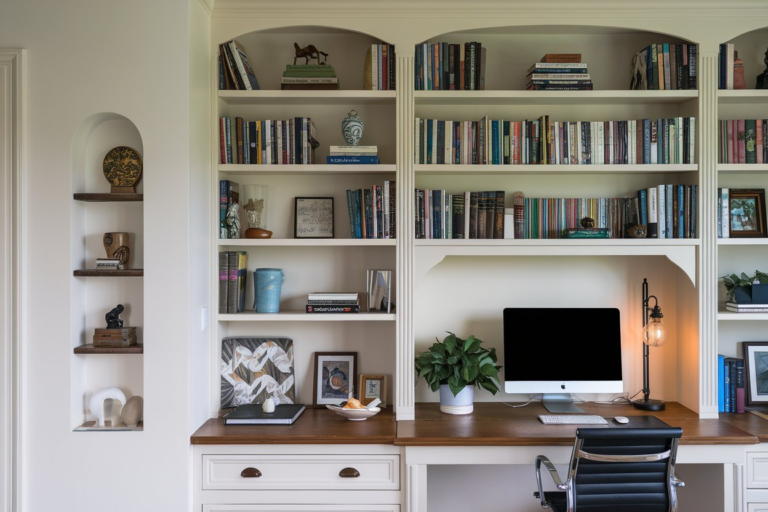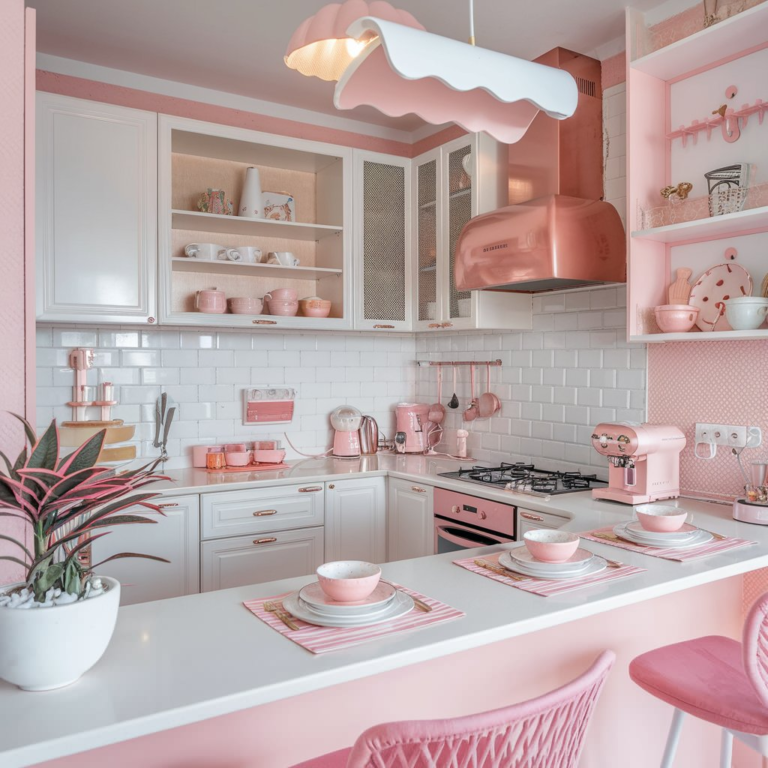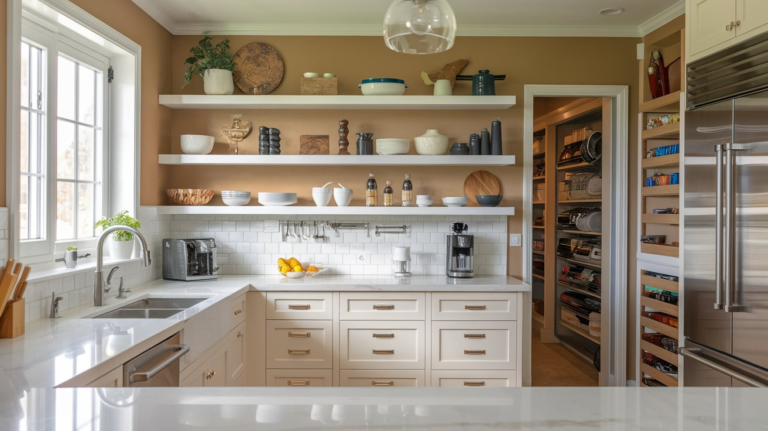20 Apartment Living Room Ideas
You don’t need a grand palace to have a living room that feels like royalty. Even if your apartment living room is the size of a postage stamp, there are clever ways to make it shine like a chandelier in a ballroom.
The secret lies in creativity, clever styling, and a dash of confidence. This guide is your treasure map to transforming your apartment’s living room into a space that reflects your personality, comforts your soul, and impresses your guests.
1. Float Your Furniture
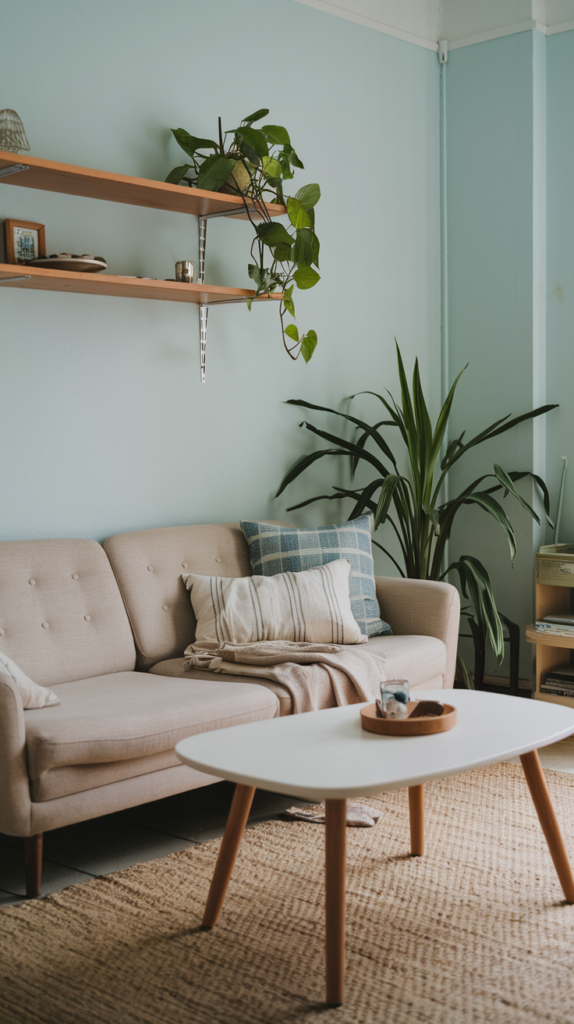
Pushing every piece of furniture against the wall is a rookie move. One of the best-kept secrets in small-space design is to float your furniture. Create intentional zones and natural walkways by pulling your sofa slightly off the wall or placing two chairs across from it with a cozy rug anchoring the space.
I once rented a tiny studio that could barely fit a loveseat. Floating it in the middle with a bookshelf behind created a faux “wall,” making it feel like two separate rooms. It felt like I unlocked a cheat code in interior design.
2. Use Mirrors to Multiply Your Space
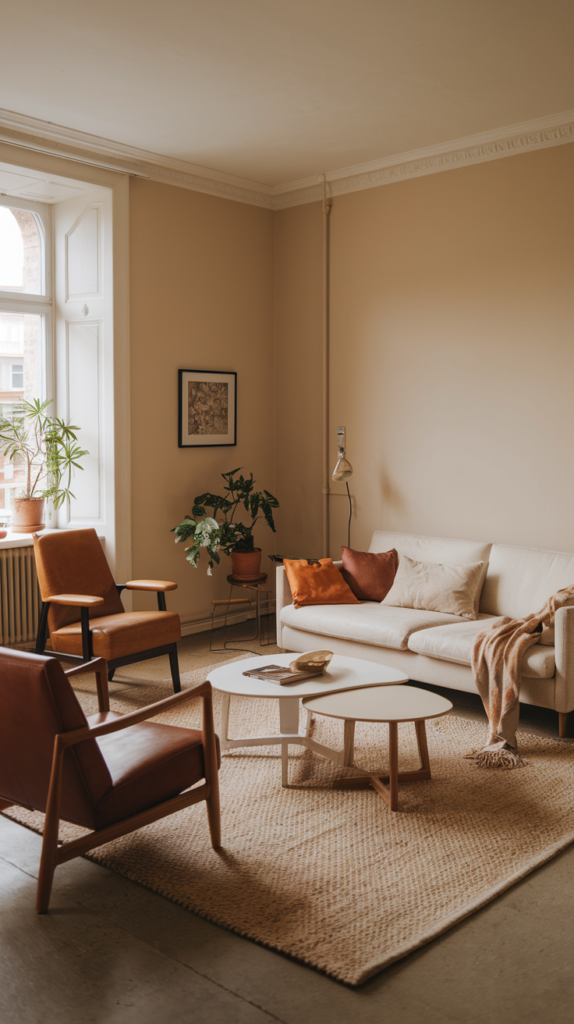
Mirrors are magical—they bounce light, reflect beautiful views, and create the illusion of a bigger room. Hang a large mirror opposite a window, and suddenly your tiny apartment feels twice as airy.
A friend of mine installed a floor-to-ceiling mirror behind her couch. The transformation was instant. It went from “cozy cave” to “urban oasis” overnight.
3. Embrace Light, Layered Curtains
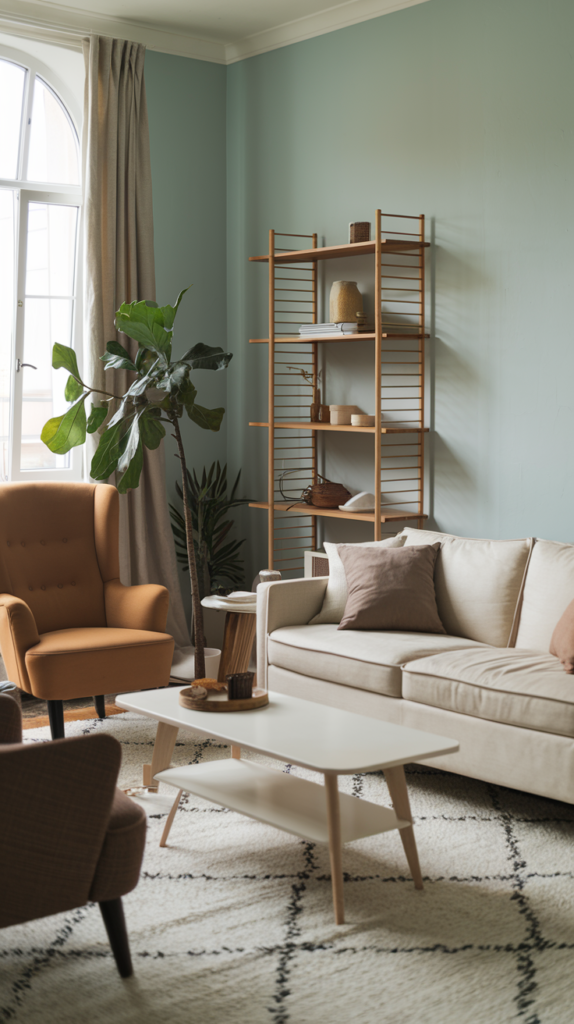
Skip the heavy, blackout drapes unless you’re a vampire. Light-filtering, sheer curtains soften the space and let in natural light, which is key to making a small room feel large and inviting. Layer them with linen or cotton panels for added depth.
4. Play with Scale

It might sound counterintuitive, but larger furniture can actually make a room feel bigger. Instead of stuffing your living room with multiple tiny pieces, opt for a few substantial, multi-functional items. A big sectional or oversized coffee table can ground the room and make it feel intentional, not cramped.
5. Choose a Bold Rug
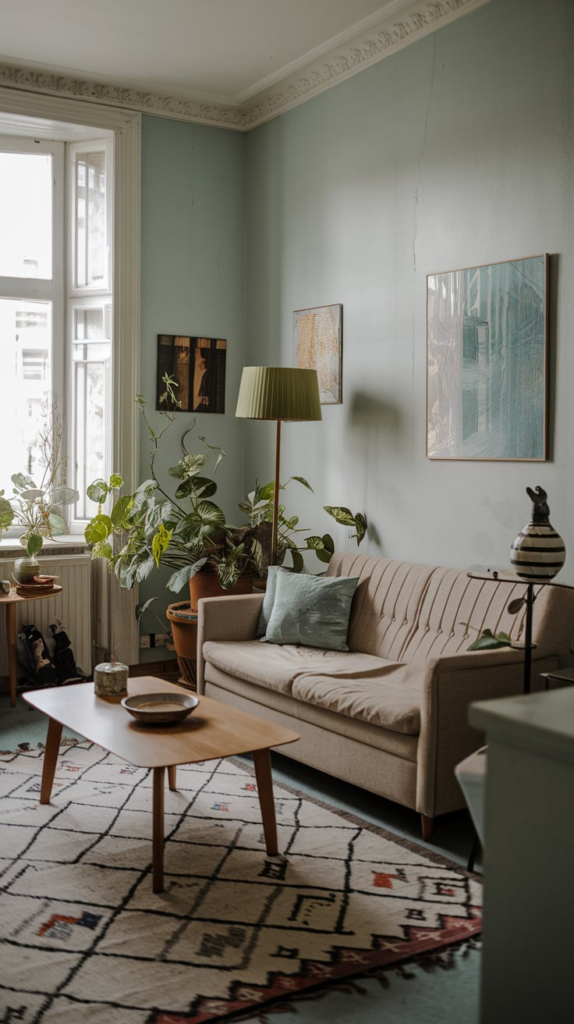
A statement rug can transform your living room from bland to bold. It anchors the space and adds personality without taking up visual clutter. Opt for geometric patterns, vibrant colors, or vintage textures that reflect your taste.
A vintage Persian rug I scored at a flea market once became the soul of my living room. Everything else revolved around its warm reds and intricate design. Instant character boost.
6. Add Multi-Functional Furniture
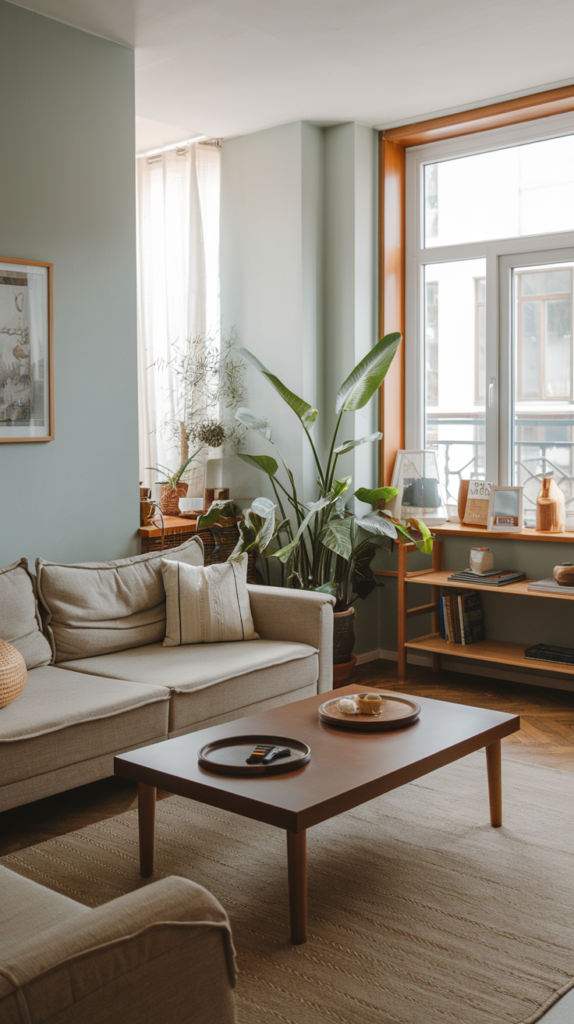
If your apartment is short on storage (and let’s be real, whose isn’t?), invest in furniture that pulls double duty. Think ottomans that open up, coffee tables with drawers, or sofas with built-in shelves.
Your future self will thank you when you’re hosting a movie night and need to stash the clutter in five seconds flat.
7. Layer Your Lighting
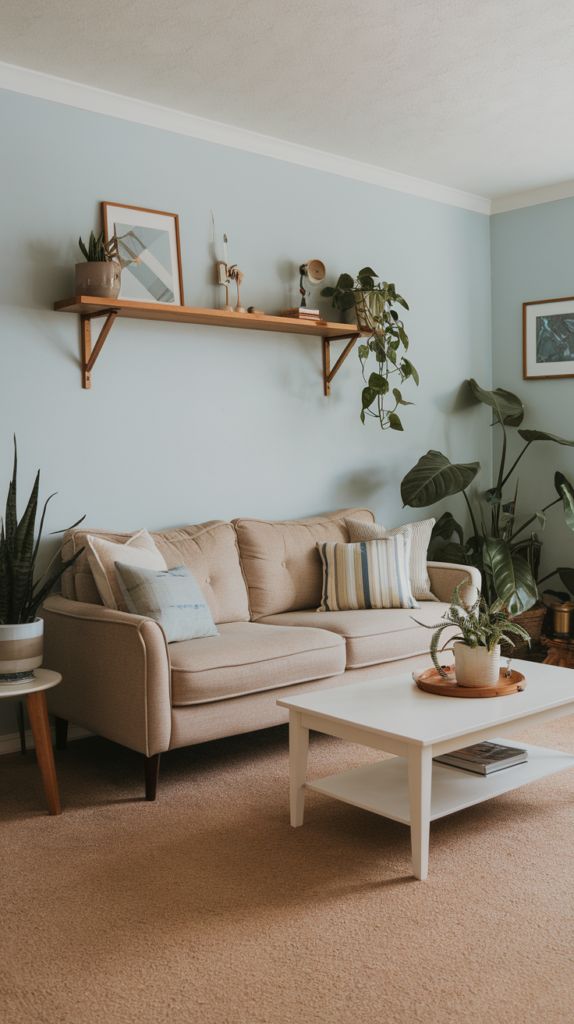
Relying solely on overhead lighting is like only seasoning with salt. Layer your lighting with table lamps, floor lamps, and even string lights to create a cozy, adjustable ambiance.
During a winter blackout, my collection of candles and fairy lights made the room feel like a Scandinavian retreat rather than a survival bunker.
8. Incorporate Vertical Storage
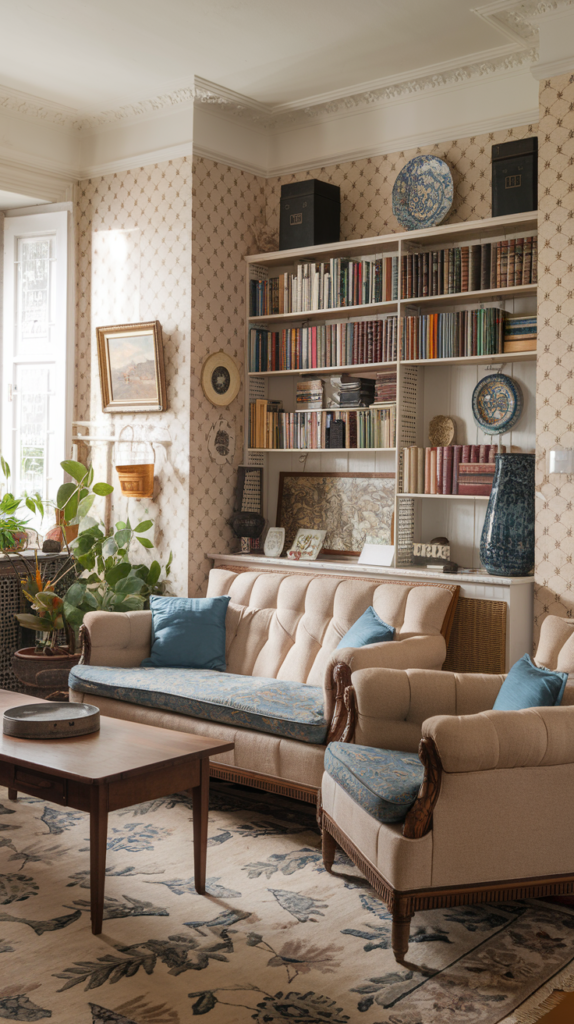
When you’re short on floor space, think upward. Vertical storage like wall-mounted shelves, tall bookcases, and hanging organizers can dramatically increase your usable space without crowding your floor.
One renter I knew used a pegboard wall to hang everything from art to tiny planters. It looked like an urban art installation—and cleared the clutter off her surfaces.
9. Create a Gallery Wall
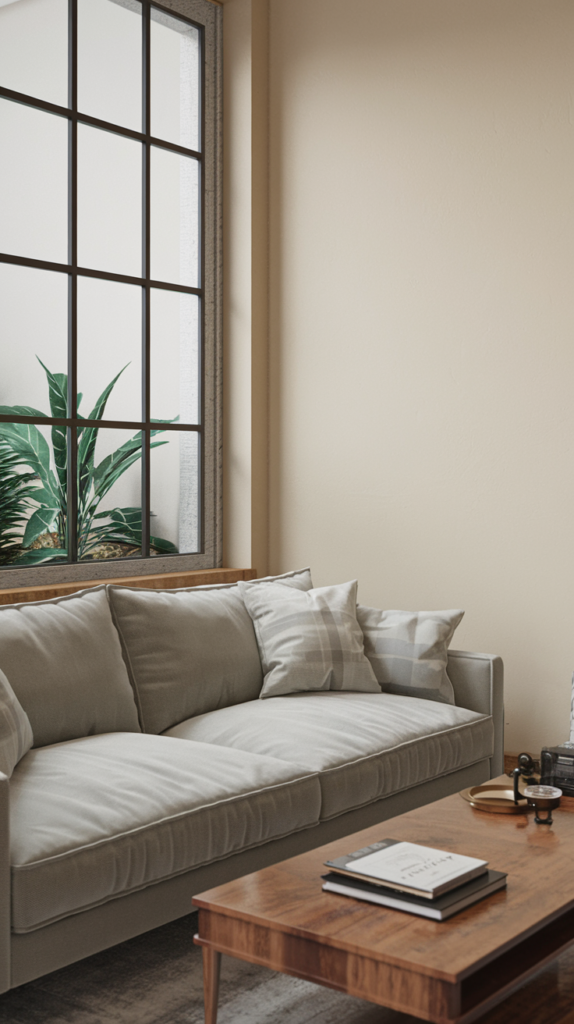
Gallery walls are storytellers. They’re perfect for expressing your style, memories, and interests—all without taking up an inch of floor space. Mix and match art, photographs, quotes, and even 3D elements like woven baskets or small shelves.
If you’re worried about committing, try peel-and-stick hooks first. No wall damage, no stress.
10. Use Color Strategically
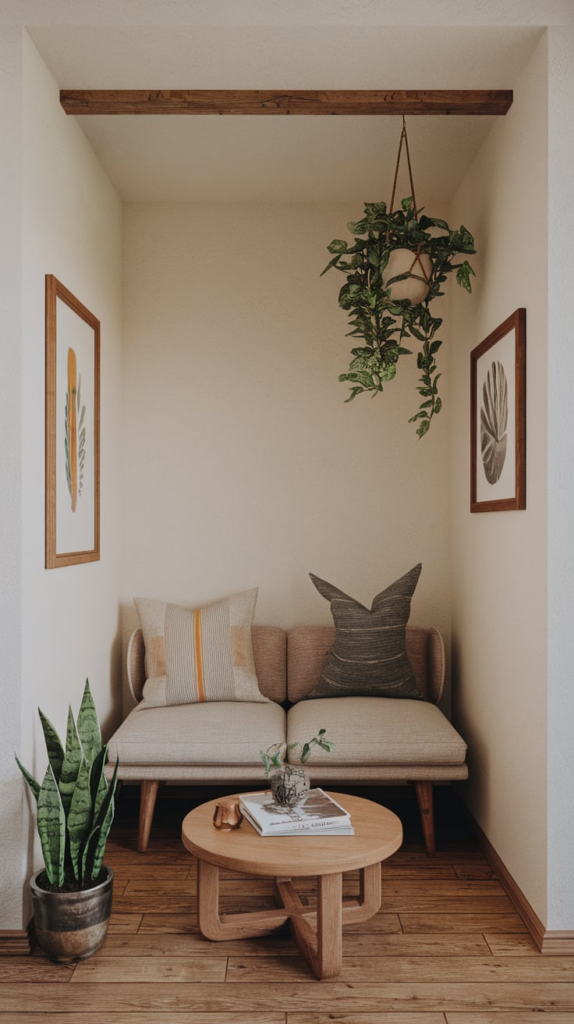
Color can make or break a small living room. Stick to a light, neutral base—think creams, soft grays, or warm whites—and layer in color through accessories. If you’re bold, a single accent wall or colorful furniture piece can work wonders.
I once painted my tiny living room navy blue, and while it was risky, pairing it with light curtains and gold accents gave it a moody, luxe feel—like a speakeasy meets designer loft.
11. Add Plants (Even Faux Ones)
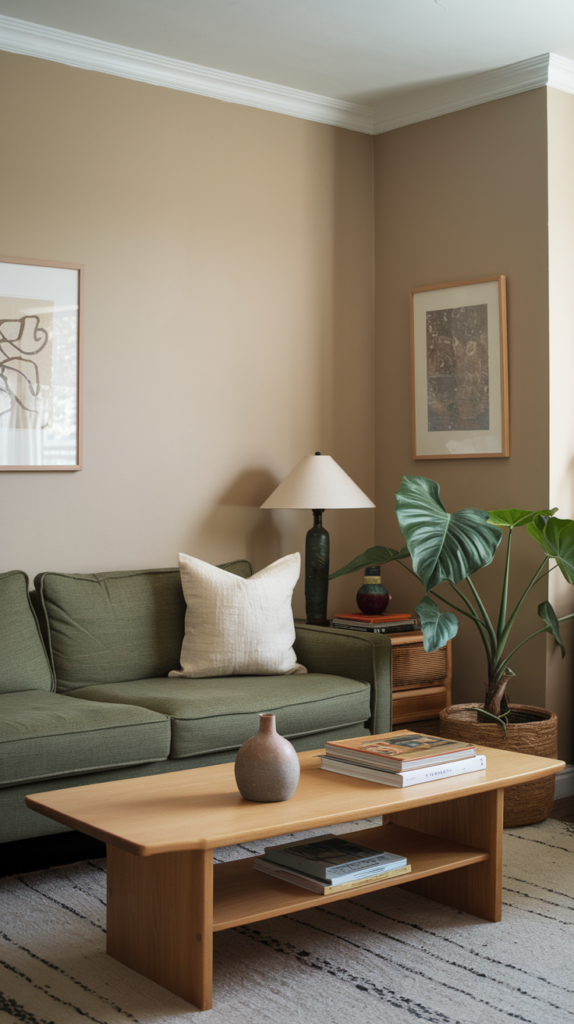
Plants are the most affordable interior stylists out there. They add life, texture, and color, and many are easy to care for. If you’re not blessed with a green thumb, faux plants are much better than a wilted pothos.
A cluster of three plants in different sizes on a side table or window sill can freshen up the whole vibe.
12. Think Modular
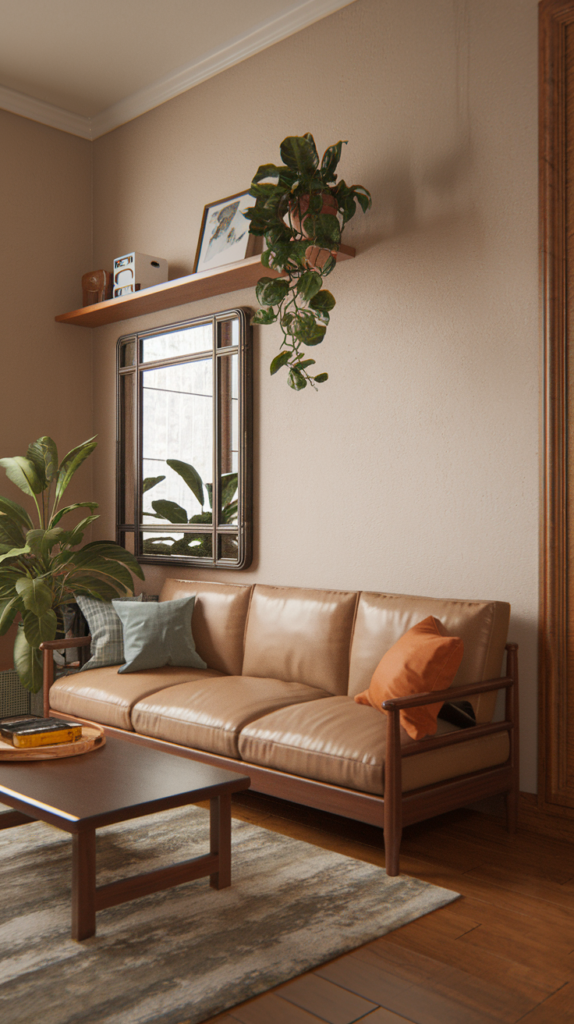
Modular furniture is like Lego for adults. It lets you adapt your living room as your needs change. Whether it’s a sectional that can rearrange into a bed or stackable stools, having flexibility is key in apartment life.
13. Hide the Tech
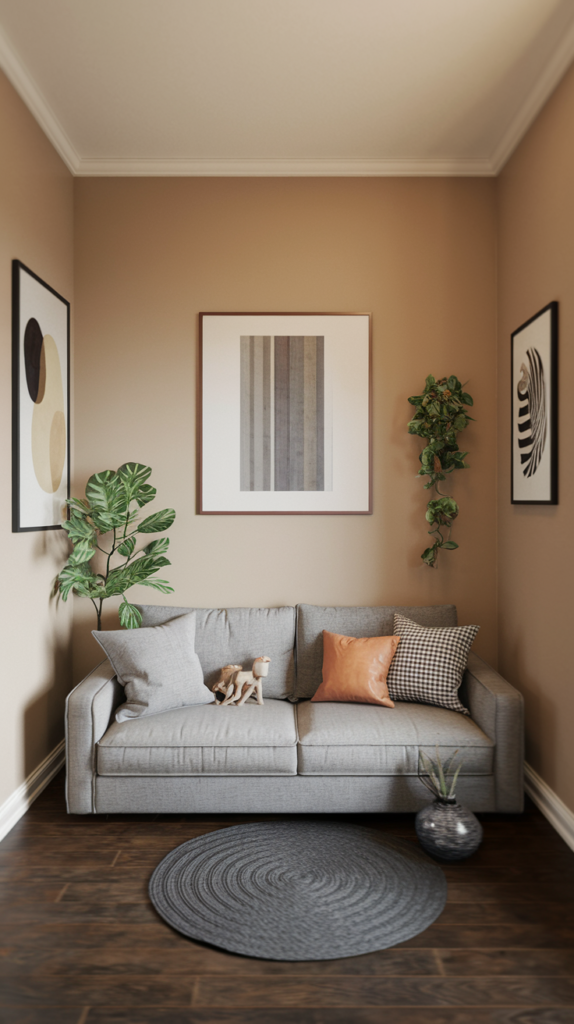
Wires and electronics can be serious eyesores. Conceal your tech with cord covers, fabric boxes, or even books that open up to hold remotes. Mount the TV on the wall to save space and reduce clutter.
14. Add Personality with Textiles
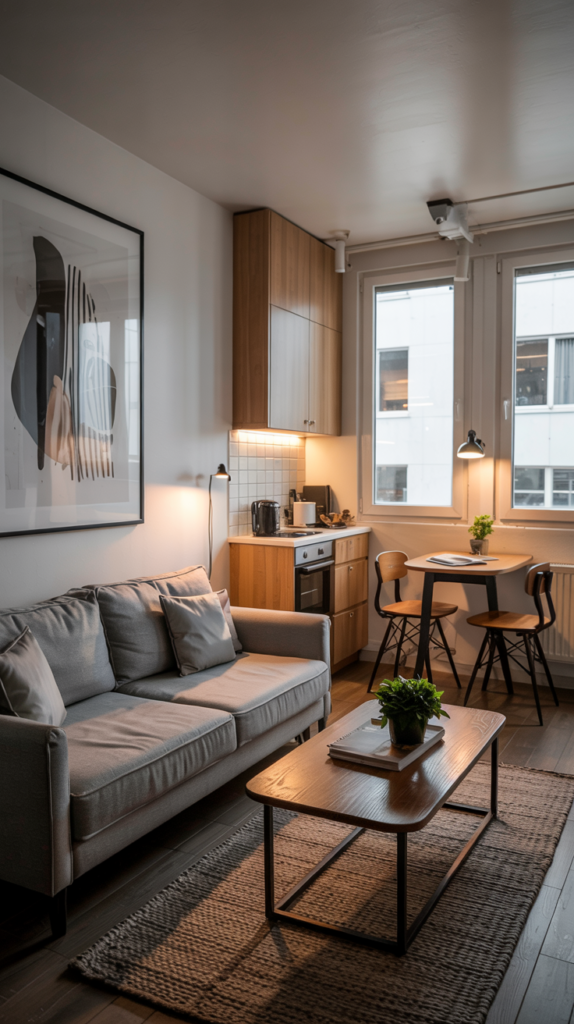
Throw pillows, blankets, and poufs are the personality pieces of your living room. Textiles allow you to experiment with texture, pattern, and color in a way that’s totally commitment-free. You can switch them out seasonally—or just when your mood changes.
I have a cushion that says “I came, I saw, I took a nap.” It’s both decorative and autobiographical.
15. Use Furniture to Define Spaces
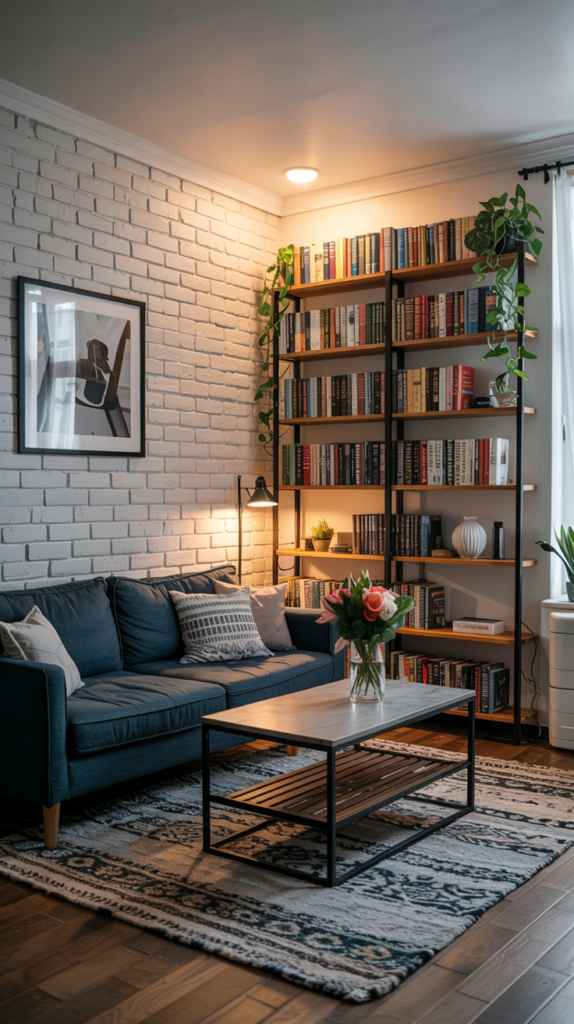
In open-plan apartments, defining zones is essential. Use a sofa to separate the living area from the kitchen or a console table to create a faux entryway. Rugs also help divide the space visually without any construction needed.
16. Go Low and Sleek
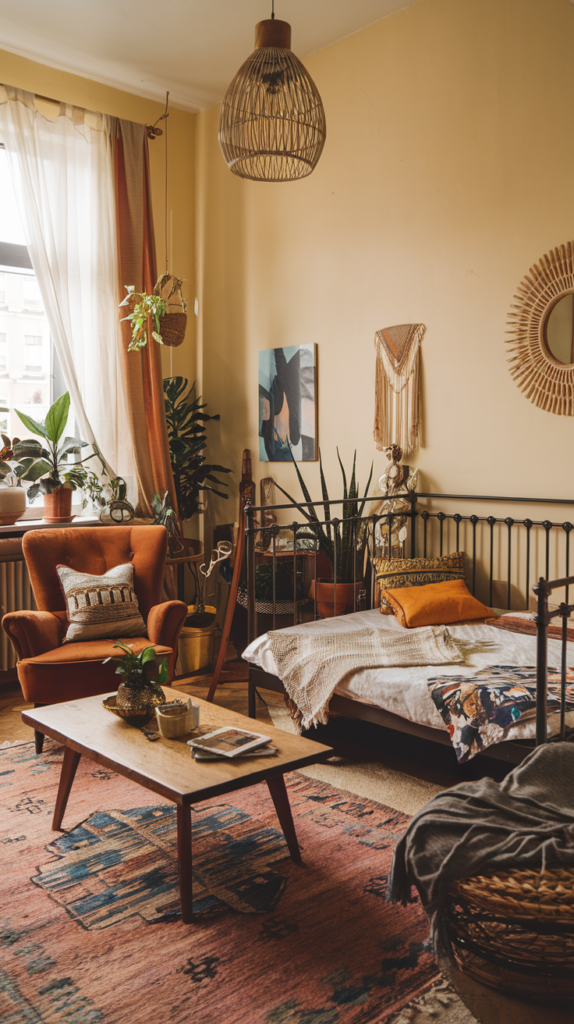
In small apartments, high-backed furniture can dominate the visual space. Opt for low-profile sofas and chairs to open up sight lines and give your room a more airy, modern feel.
It’s like giving your room a flattering haircut—suddenly everything looks lighter.
17. Add a Statement Piece
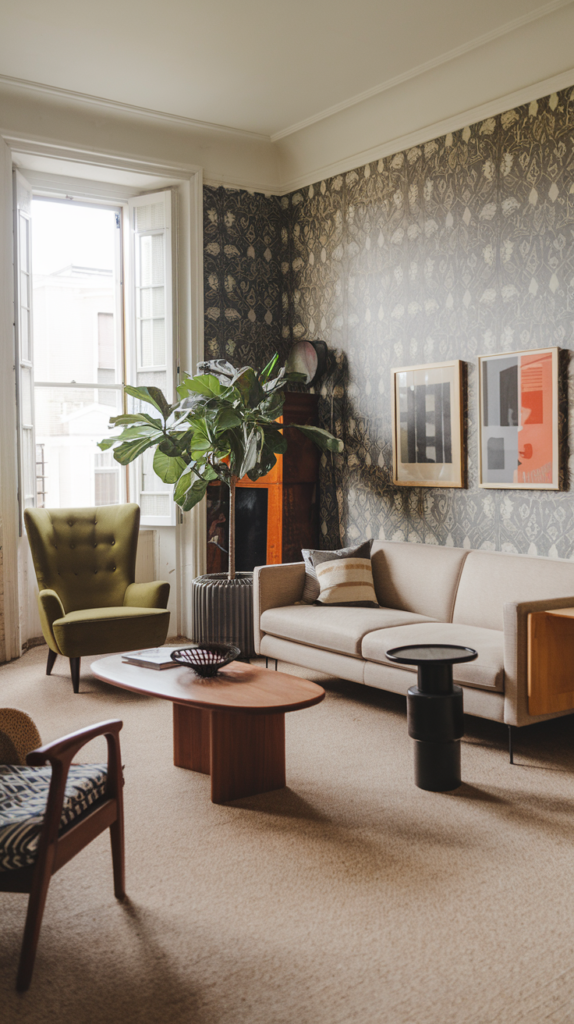
Every room needs a hero. Whether it’s a bright armchair, a dramatic chandelier, or a quirky piece of art, a statement piece adds energy and intrigue.
In my last apartment, it was a peacock blue velvet chair that everyone wanted to sit in. It wasn’t just furniture—it was a conversation starter.
18. Use Clear and Glass Furniture
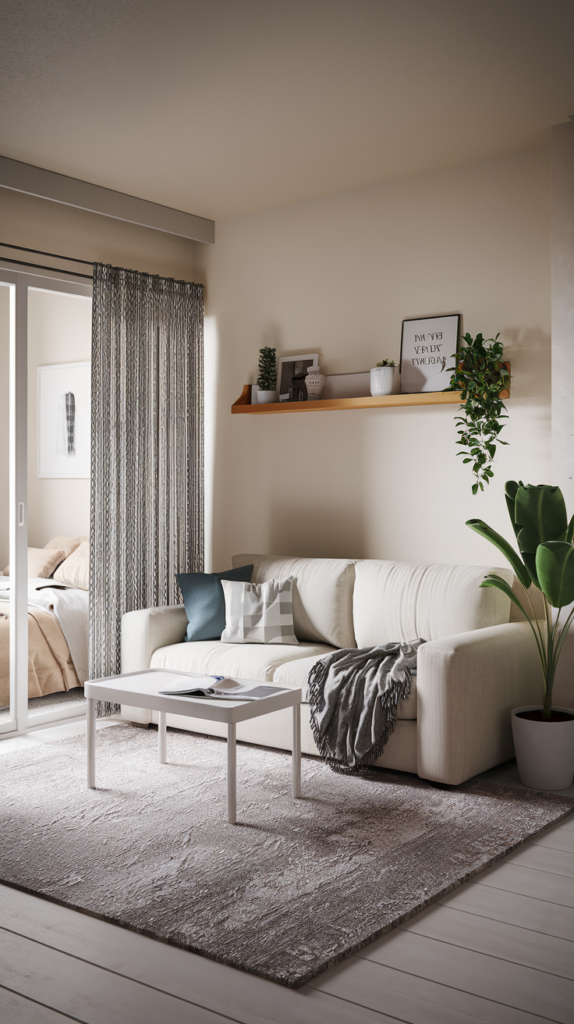
Lucite, acrylic, and glass pieces give you the illusion of space because they don’t visually interrupt the room. A glass coffee table can make the space feel open, while still being functional.
It’s the Houdini of furniture—there when you need it, invisible when you don’t.
19. Keep the Palette Cohesive

To make a small space feel intentional and curated, stick to a cohesive color palette. This doesn’t mean boring—it means thoughtful. Choose a few base colors and sprinkle in accent tones through decor.
A neutral base with pops of terracotta and sage can make your space feel both calming and stylish.
20. Make It Yours

The most important rule of all: make your living room reflect YOU. Don’t copy a showroom or Pinterest board blindly. Your space should include things that spark joy, tell your story, and make you feel at home.
Display your travel souvenirs, your favorite books, or the goofy photo of your dog wearing sunglasses. The charm lies in the details that are uniquely yours.
Conclusion
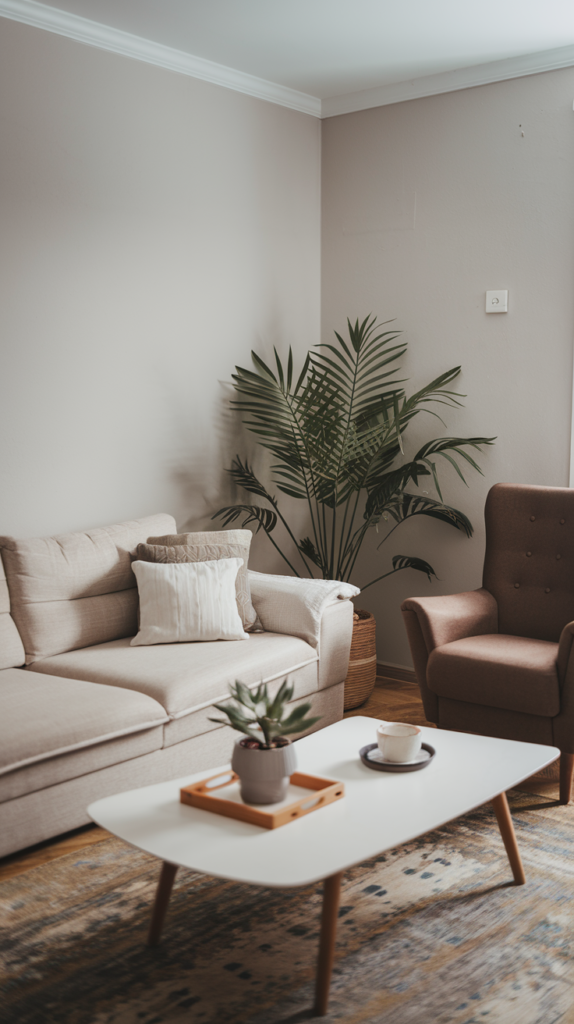
Apartment living rooms may be small, but they can hold huge potential. With a bit of creativity, intentional choices, and personal flair, your compact space can rival even the most expansive living areas. These 20 ideas are starting points, not rules—feel free to mix, match, or completely remix them to suit your style.
And remember: a small space doesn’t mean small dreams. It just means your design game has to be smarter, sharper, and a little more spirited. Which, let’s be honest, is exactly the kind of challenge you were made for.
Want me to help turn this into a downloadable PDF or expand on any section with examples or product recommendations?
